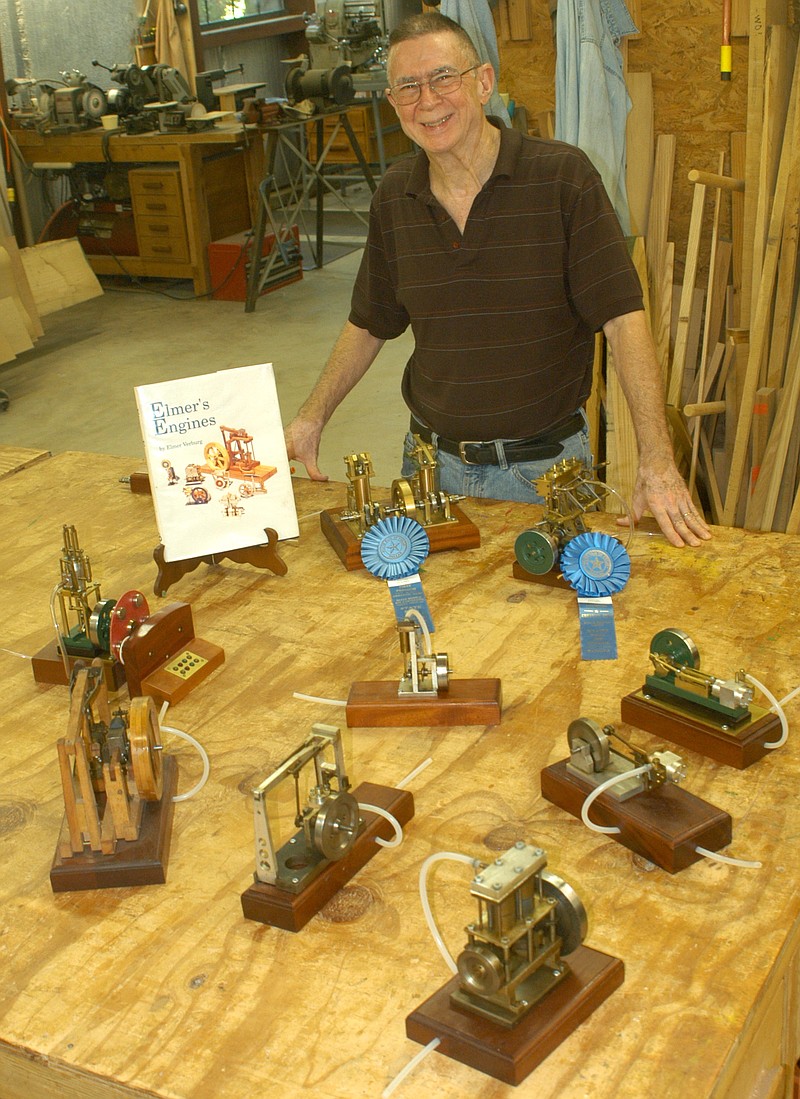In the quiet of the piney woods of the Eagle Landing community near Avinger, Texas, and next to a log cabin home, an old industrial art is alive and well.
Dave Young is building steam engines in his clean and orderly garage workshop.
These aren't engines with giant smokestacks, boilers and pulleys. They are small, jewel-like machines. You can hold one in two hands.
When they run, they gyrate swiftly and quietly. They don't power other machines. The up-and-down motion of their pistons and beams is turned into the rotation of a drive shaft.
In olden days, that drive shaft would have snaked through a large plant. The belts feeding off it would provide turning power for the milling machines, lathes, presses, hammers and saws of hundreds of workers.
Where formerly these workers would have had only hand tools and perhaps horse or water power, one steam engine coming on the line in 1883 could provide 10,000 horsepower close by.
Craftman turns his hand to making musical instrument
Young's model steam engines harken back to the Industrial Revolution, a time when almost everything ran on steam.
His creations have won him a blue ribbon in the model builders' contest at the Texas State Fair.
Young builds his engines entirely from scratch.
Need a screw made of a certain metal, with special threads, length and size? Young doesn't go to the hardware store. He builds that part on the spot on his milling machine or lathe.
"Would take me about 15 minutes," he said.
His workshop leaves the same impression of creativity. This is no dungeon of oil and grime. His production machinery glistens. Work surfaces are spacious, clear and clean. Dave himself is quiet and unassuming, his hands quick and nimble.
It seems he could build anything out of metal as easily as a someone else might sew thread to make a garment.
His skill also invokes another tradition: He's self-taught. He learned from his family and by observing. It's a family trait.
"I inherited the milling machine and lathe from my father and father-in-law, who were both great friends and into making model steam engines and other things," said Young, an electrical engineer by profession.
"To them, one looks at something and has an idea about it or something else. You have a milling machine and lathe whose sole purpose is to make things such as another machine. And you think, I can make that," he said.
The machines sat around in his workshop unused until Dave spotted a partially finished steam model that his father-in-law had started before his death.
"I thought about it, studied the plans and decided it would be good to complete it in my father-in-law's memory," he said. "I did, and that's when I became hooked."
His metalworking then joined his other avocation, woodworking, which he's been involved with for 40 years. That's in addition to his 30-year career with Dallas-based Texas Instruments in radar development and other innovative electronics work.
He said the satisfaction of building the steam engines is that they permit design variations. Whenever Dave makes a model, he tries to comes up with something new in the way it makes and transfers power.
"It's movement art," he describes. "The operation of valves and linkages that drive the engine are different. My father-in-law had built one almost entirely of wood. I've built one that uses magnets and coils to produce digital lights. Another is a twin walking-beam engine with two different linkages for the pistons. That's the one that won the blue ribbon. No one had seen one like it before."
So it is that Dave Young's model steam machines have the twin impact of being a reminder of olden days while being fresh and new in design and function.
Young's models themselves don't do anything. They simply work and inspire the mind.
And that brings up features of the Age of Steam and the Industrial Revolution, when development of new ways to make things was primary.
Today is known as the Age of Information, but steam still produces much of the electricity we use to gather that information. Virtually all nuclear power plants, for example, generate electricity by heating water to provide steam for turbines.
And a little of that steam power is being demonstrated right here in Cass County, in a garage in the Eagle Landing community.
Dave Young gets a kick out of his little machines that can.

